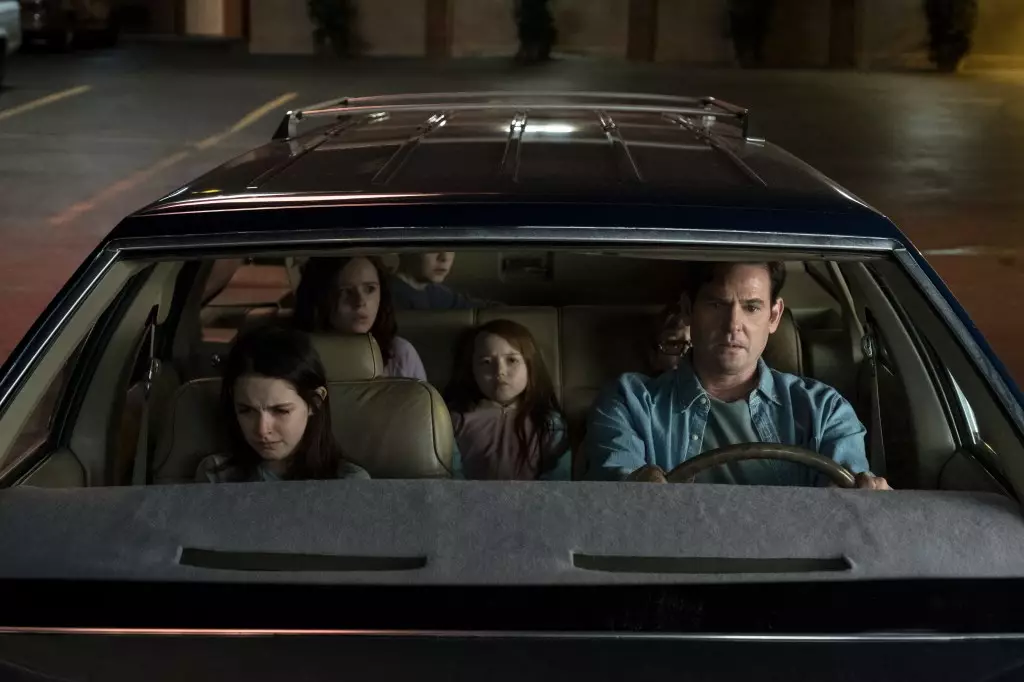Mike Flanagan, the maestro of modern horror, has masterfully woven personal experiences into the fabric of his storytelling, carving out a unique niche where art becomes an instrument of healing. The director recently opened up about how his cinematic creations have served as emotional catharses, particularly in the wake of profound loss. His project, *The Haunting of Hill House*, debuted during a turbulent period rife with bereavement from a family suicide. Flanagan describes how each frame represents not just a narrative, but an intimate exploration of his own sorrow. “There are images in that show that were born from dreams and nightmares I navigated during those dark days,” he shared. Through his craft, he has harnessed his grief, transforming what could have been an overwhelming burden into a narrative that resonates with audiences navigating their own tribulations.
Horror, often dismissed as a genre of mere frights, becomes, under Flanagan’s skilled guidance, a profound examination of human experience. He articulates that his approach is not merely about delivering scares; it is about addressing the complex emotional landscapes that come with loss. This perspective champions the idea that art, especially horror, can serve not just as entertainment, but as a therapeutic tool. For those grappling with similar experiences, Flanagan’s work can act as a lifeline, creating a space for understanding, reflection, and ultimately, healing.
Wine and Woe: A Struggle Against Addiction
Flanagan’s battle with addiction is another thread woven throughout his filmography. Projects like *Doctor Sleep* and *Midnight Mass* reflect his continued confrontation with alcoholism, with *Doctor Sleep* acting as a cornerstone in his journey toward sobriety. He notes that the process of creating these stories has not only aided his healing but served as a cautionary tale to others. Flanagan has often infused his storytelling with elements of his personal battles, lending his narratives a sense of authenticity that resonates with audiences on a deeper level. This intertwining of lived experience with creative output elevates his work, challenging the audience to view horror through a lens of empathy rather than mere terror.
While many directors shy away from revealing their vulnerabilities, Flanagan embraces them as a vital part of his artistic identity. This candidness is both refreshing and invaluable, as it allows viewers to reconnect with their own humanity amidst the frightful imagery. His films provoke not only screams but introspection, compelling the audience to examine their fears and the darkness within.
Confronting Genre Prejudices
During a recent discussion at SXSW London, Flanagan shed light on an important aspect of the horror genre: the persistent bias against it within both industry circles and audiences. He lamented that despite a growing recognition of horror as a legitimate art form, misconceptions continue to linger. “There’s a misperception of what horror can be,” he remarked. Flanagan pointed to the success of films like *Get Out*, which sequenced horror with social commentary, lending credibility to the genre. Yet, he suggested that these acknowledgments are fleeting, as industry and audience perceptions tend to revert over time.
This cyclical bias poses a unique challenge. Flanagan implores audiences to recognize horror as a narrative form that delivers emotional depth alongside thrills. “It’s always been a rich vein of storytelling, but every time a project emerges, people are surprised that it has substance,” he asserted. This tunnel vision around the horror genre often overshadows its capacity for developing profound narrative arcs and character depth, revealing layers of complexity that merit exploration.
Revolutionizing Monologues in Film
In advocating for an appreciation of monologues in modern cinema, Flanagan urges filmmakers to resist the forces that seek to truncate this powerful storytelling device. He argues passionately that monologues have a unique ability to engage audiences, offering a moment of connection with characters’ innermost thoughts. “There’s nothing more powerful than watching an actor transform reality with just words,” Flanagan asserted, lamenting a general trend toward brevity in modern storytelling.
As the streaming era pushes for snappier narratives, the essence of impactful storytelling risks getting lost in favor of pacing. Flanagan’s emphasis on the importance of monologues serves not only as a defense of character-driven storytelling but also as a rebellion against a culture increasingly obsessed with brevity. In his vision, monologues are not just theatrical flourishes; they are avenues for emotional engagement and understanding.
As Flanagan continues to navigate the murky waters of grief, addiction, and genre bias, he remains at the forefront of a movement redefining how we view horror. His work does not just unsettle; it encourages us to embrace our vulnerabilities, turning fear into understanding and alienation into connection.
